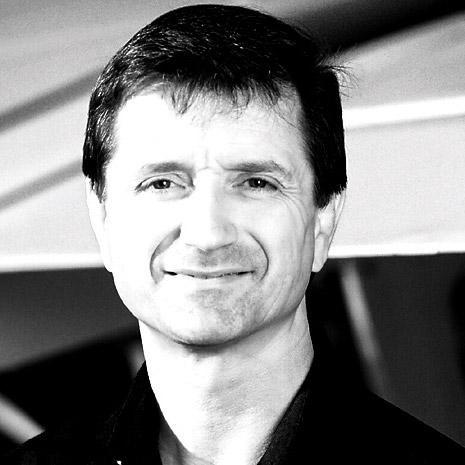How to teach landings is the question
I'm a flight instructor, teaching primary students. Do you do touch and goes or full-stops and taxi back when training student pilots on landings? Is one better than the other for training?
Thanks,
Patty
Greetings Patty:
I've always used touch and goes with primary students during landing practice. I do so because it saves them a lot of time. One of the reasons that students seem to be taking more time to solo nowadays is because they are doing full-stop taxibacks instead of touch and goes. When flying circuits in a non-crowded pattern, it's possible to do one touch and go about every five minutes. Full-stop taxibacks can easily take twice as long (or more) if the pattern is crowded and a tower is involved.
Now, some instructors and FBOs prefer full-stop taxibacks because they feel it's safer to do so. In particular, they believe that students are less likely to have landing accidents during solo when they've learned to land using the full-stop/taxiback method. My experience training students doesn't say this is so, as long as those students are trained well. Then again, I'm not the guy paying the large insurance premiums that FBOs are forced to pay. I'm sympathetic to their bias in favor of doing anything that minimizes even the smallest of risks.
On the other hand, if you feel full stops are safer, then please consider doing stop and goes on the runway. If you're at a tower-controlled airport, simply ask the controller for stop and goes. The controller will expect you to come to a complete stop on the runway and take off again. Keep in mind that this is a stop and go, not a "stop and goof around a bit before you go." You must also make sure you have enough runway to safely accomplish the "go" part.
The one exception that I have to touch and goes when teaching landings is when I train in a taildragger. I find it better to use full stops--or stop and goes--during the initial landing lessons. A taildragger doesn't stop flying until it's stopped, and full-stop landings help the student to understand this point. Once the student does understand, I transition to touch-and-go landings.
Nix the negative Gs
Dear Rod:
Is it common for a pilot to experience negative Gs when doing stall recoveries? The sensation makes me feel queasy, and I don't want to take lessons if I'm going to feel this way.
Thanks,
Nearly Queasy
Dear Nearly Queasy:
If you're experiencing negative Gs during stall recovery, then you have every reason to be queasy, perhaps because your instructor's behavior seems a bit "quazy." There is no reason whatsoever to experience negative Gs during stall recovery, unless you simultaneously apply stall-recovery techniques while diving to avoid another airplane. I don't believe the Practical Test Standards requires you to demonstrate both of those maneuvers at the same time.
Now, I suspect you really meant to say that you're experiencing something less than 1 G during stall recovery, perhaps even something close to 0 Gs, but probably not negative Gs. Negative Gs make it sound like you're using an outside loop to return to normal flight, sort of bringing up and around from the back side.
Most stalls and their recoveries are done with very little downward acceleration. Thus, you maintain nearly one positive G throughout the entire recovery process. This implies that you'll also experience very little altitude loss during the stall and subsequent recovery. If you experience a large loss of G-loading, much less negative Gs, then you're overcontrolling and most certainly losing much more altitude than is necessary for recovery.
A quick path to the CFI
Dear Rod,
Can a person with no flying time at all become a CFI in a year's time? I want to obtain my private, instrument, commercial, and flight instructor certificates in a year. Would you recommend a person doing this? Can I still become a good pilot? What about attending an accelerated flight school to accomplish this objective?
Thanks
Mr. C Greetings Mr. C:
I knew someone who went from zero flight time to CFII in six months. Now, this person was really motivated and did it all at the local FBO at a general aviation airport. I think a lot of coffee was involved, too. I have no doubt that, given a good school and good instructor--oh yes, and adequate financial resources--you can easily do this in less than a year, perhaps much less.
If you have the time, energy, and funds to train this way, then do it. Many folks have had success with accelerated training, and there's no reason that you shouldn't. You're probably better off doing this type of training at a place with a full-time instructor, a sufficient supply of training airplanes, and good weather for long periods of time. As far as attending an accelerated flight school, these folks know how to produce well-trained pilots in quick time. They definitely have the machinery and infrastructure to accommodate your accelerated training needs.
How good a fast-track pilot will be as a pilot depends on the individual. I've known pilots who've graduated from prestigious aviation colleges and yet were amazingly deficient in the basics of aviation knowledge. On the other hand, I've known pilots who acquired all their certificates at an accelerated school and, because of the quality of their character and their deep curiosity, were some of the most competent pilots and instructors in this business.
Rod Machado is a flight instructor, author, educator, and speaker. A pilot since 1970 and a CFI since 1974, he has flown more than 8,000 hours and owns a Beech A36 Bonanza. Visit his Web site.



